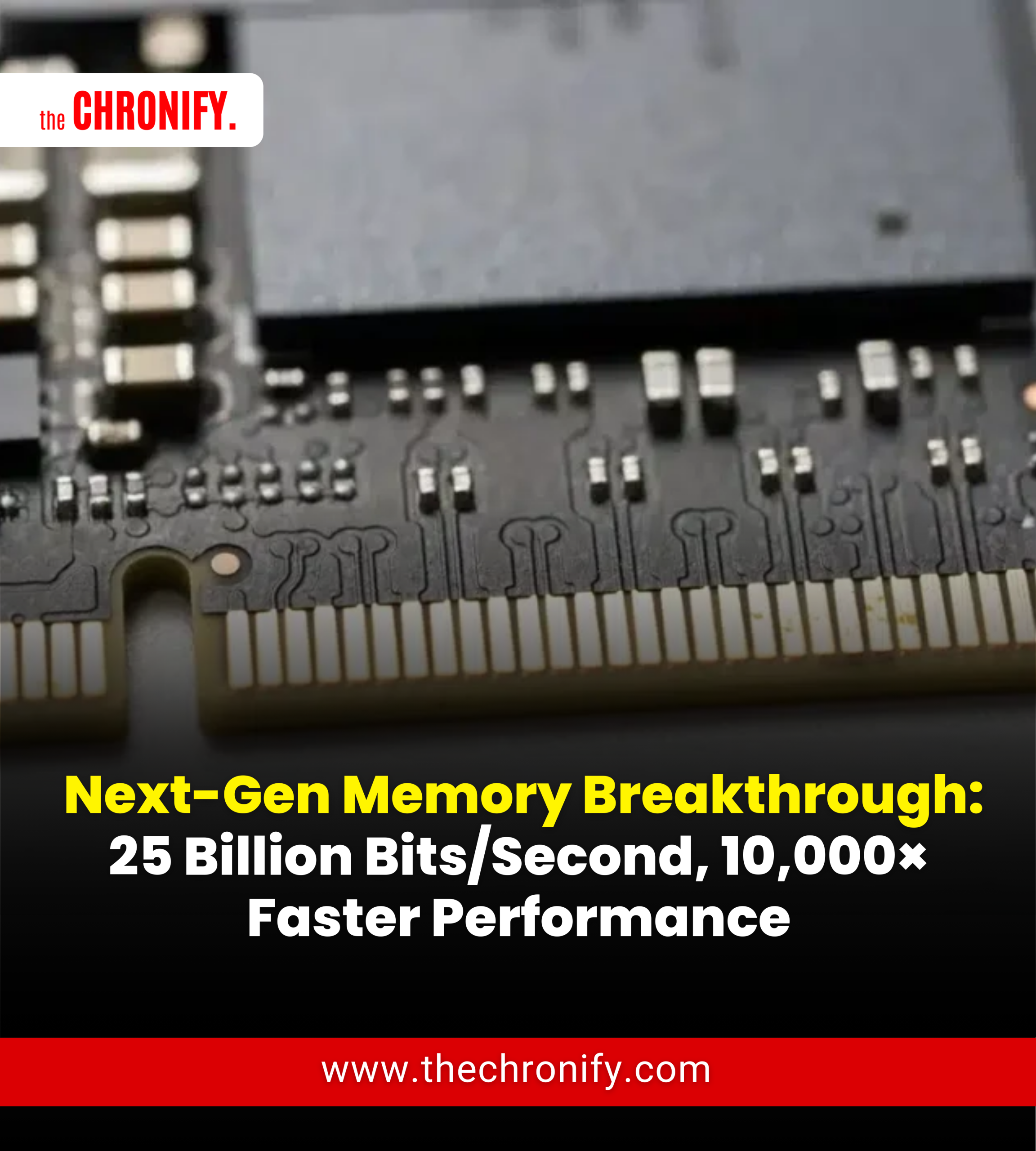World’s Fastest Memory Achieves 25 Billion Bits/Second, 10,000× Faster Than Current Tech
A research team from Fudan University has unveiled the fastest semiconductor memory ever reported: a non-volatile flash device called PoX, capable of programming a single bit in just 400 picoseconds (0.0000000004 seconds) — that’s roughly 25 billion operations per second. Their groundbreaking work, published in Nature, pushes non-volatile memory into a speed range previously reserved only for volatile memory like SRAM and DRAM, marking a major leap forward for AI hardware.
Breaking Speed Barriers
While today’s SRAM and DRAM operate within 1–10 nanoseconds but lose data without power, flash memories retain data even when powered off but typically take microseconds or more per write — too slow for modern AI systems.
Professor Zhou Peng’s team at the State Key Laboratory of Integrated Chips and Systems tackled this by redesigning flash memory’s core: they swapped out silicon channels for two-dimensional Dirac graphene, exploiting its ballistic charge transport to bypass traditional bottlenecks.
Their approach, which involved precisely adjusting the “Gaussian length” of the channel to achieve two-dimensional super-injection, allowed for unprecedented charge surges into the storage layer. “By applying AI-optimized processes, we’ve pushed non-volatile memory to its theoretical maximum,” Zhou told Xinhua, describing it as a game-changer for next-generation flash.
A Billion Cycles in an Instant
Co-author Liu Chunsen compared the breakthrough to moving from a USB drive writing 1,000 times per second to a chip capable of one billion writes in a blink. The previous world record for non-volatile flash programming was around two million operations per second.
Importantly, PoX retains data without consuming standby power, making it ideal for edge AI and energy-constrained systems. With its ultra-fast and ultra-efficient design, this memory could remove a major bottleneck in AI processing, where moving data, rather than computing it, now dominates power usage.
Industrial and Strategic Impact
Flash memory remains central to global semiconductor strategies, thanks to its scalability and cost. Experts say Fudan’s innovation, based on a “completely original mechanism,” has the potential to reshape the entire industry.
If successfully mass-produced, PoX could eliminate the need for separate high-speed SRAM caches in AI chips, reducing both space and energy use. It could also enable instant-on, low-power devices like laptops and smartphones, as well as revolutionize databases by allowing working sets to live entirely in persistent RAM.
This development could also strengthen China’s strategic push for leadership in foundational chip technologies. Although details about endurance and production yields haven’t been shared, the use of graphene suggests compatibility with the 2D-material fabrication processes that global semiconductor manufacturers are already exploring.
“Our work has the potential to transform storage technology, fuel industrial innovation, and open entirely new application fields,” Zhou emphasized.
What’s Next
The Fudan team is now scaling the memory’s architecture and working on full-array demonstrations. While no commercial partners have been named yet, Chinese foundries are racing to integrate 2D materials with mainstream CMOS production lines.
If successful, PoX could become a new class of ultra-fast, ultra-efficient memory that finally matches the speed demands of AI accelerators — offering a storage solution that moves as fast as modern AI thinks.

